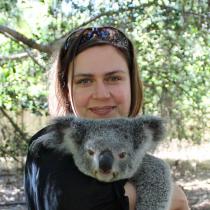CLR person interests, research and publications
Researcher

About me
I am a metamorphic petrologist focusing on origin of migmatitic rocks and related melt transport through continental crust. I am interested how melt can move in felsic rock and what impact does it have for the crustal rheology and deformation. I study particular type of melt flow, so-called “porous melt flow” and my aim is to define conditions at which this melt transport can operate. My work is combination of field work, microscopic observations, microstructural analysis, petrochronology and geochemistry. Field areas I am focusing on are large migmatitic terranes in Bohemian Massif (Czech Republic), Vosges Mts. (France), Himalaya (India) and recently also Namibia.
Research interests
- Melt transport and segregation in the crust
- Origin of migmatitic rocks
- Thermodynamic modelling of melt (fluid)-rock interaction
- Crustal anatexis in high-grade metamorphic terranes
- Role of fluids in metamorphism and melting
- Strain localization and partitioning in shear zones
Research projects
Melt migration is the key process transferring mass, heat and volatiles from the Earth’s depth towards the surface, and therefore shaping the chemical and thermal structure of the lithosphere. Common understanding of crustal melt migration is biased towards mechanisms that can be easily identified as they preserve macroscopic segregations of melt in outcrops, such as in dykes or leucosome-bearing migmatites. In contrast, recent observations show that micro-scale pervasive flow of melt along grain boundaries can affect significant portions of hot continental crust.
We need to determine what is the structure of magmatic systems that underlay volcanoes in order to understand how volcanic eruptions are fed from depth and how mineral resources associated to igneous rocks are generated. The current paradigm is that transient pockets of crystal-poor magma form in extended columns of crystal-rich magma mush.
We aim to study and compare various aspects that are related to exhumation of deeply buried felsic rocks that form now Devonian and Carboniferous granulite-migmatite domes in the Variscan belt and contributed thus to large-scale crustal differentiation. The role of melting on the rheological weakening of the rocks is known for a long time, but differences of the melting processes of metasedimentary rocks and granitoid rocks, with respect to fluid-present, dehydration and fluid-fluxed melting and relation to the P-T path of the rocks are rarely studied simultaneously.
The growth of eastern Pangea involves three contrasting orogenic cycles: 1) Baikalian cycle (570-540 Ma) consists of accretion of peri-Rodinian continental, Mirovoi and Panthalassan oceanic fragments to the Siberian margin followed by extensional HT reworking, the growth of magmatic arc, giant accretionary wedge and intraoceanic basin. 2) Altai cycle is typified by crustal thickening followed by syn-extensional melting of the accretionary wedge (420-380 Ma) and the opening of Mongol-Okhotsk ocean.
The aim of this project is to better understand partial melting of felsic rocks at high pressure. We will use examples of Eger and Kutná Hora Crystalline Complexes, which both consist of HPHT migmatites, granulites and orthogneisses.
Melting processes in metagranitoids will be investigated by answering following questions: 1. Is the pervasive melt flow on grain boundaries the major melt transport mechanism in metagranitoids, instead of interconnected leucosome network known from metasediments? 2. Do the large melt quantities in metagranitoids result from fluid-fluxed melting and how the fluids entre the migmatites? Are dehydration melting and fluid-fluxed domains contemporaneous or superimposed? 3.
Melting of the crust leads to granitic magmas that vary widely in composition and in ability to generate metal deposits or cause explosive volcanism. A number of superposing, competing processes control this variability. Much has been learnt from investigating processes late in the magma history, but not much is known about magma generation at depth and what happens to it during transport to the upper crust. Indirect knowledge or inferences based on little data, leads to speculation and controversies.
Selected segments of Euroasian orogenic system are used to constrain relative contribution of contrasting processes of continental construction in collisional and accretionary orogenic systems. Principal objectives of the proposal are: (i) identification of the individual terranes, kinematic analysis of their movements and characterization of deformation style connected with their amalgamation; (ii) estimation of net crustal growth vs. recycling of preexistent crustal material.
The aim of this project is to carry out large-scale investigations of mechanisms and processes related to crustal thickening and formation of thick crustal root of large hot orogens exemplified by the Bohemian Massif. Our recent studies in Bohemian Massif showed that the formation of thickened continental crust was related to massive relamination of lower plate felsic crust followed by crustal thickening.
The goal of the study is to complement existing AMS and geochronological data from the Vosges Mts., France, by well-focused microstructural study of potential old mineralogical inheritance in the Vosges main granitoids. This project aims to develop a method that will allow to determine the proportion and microstructural appearance of inherited “xenocrysts” and of new melt derived crystals in partially molten rocks and then implement this method on the Vosges granitoids.
